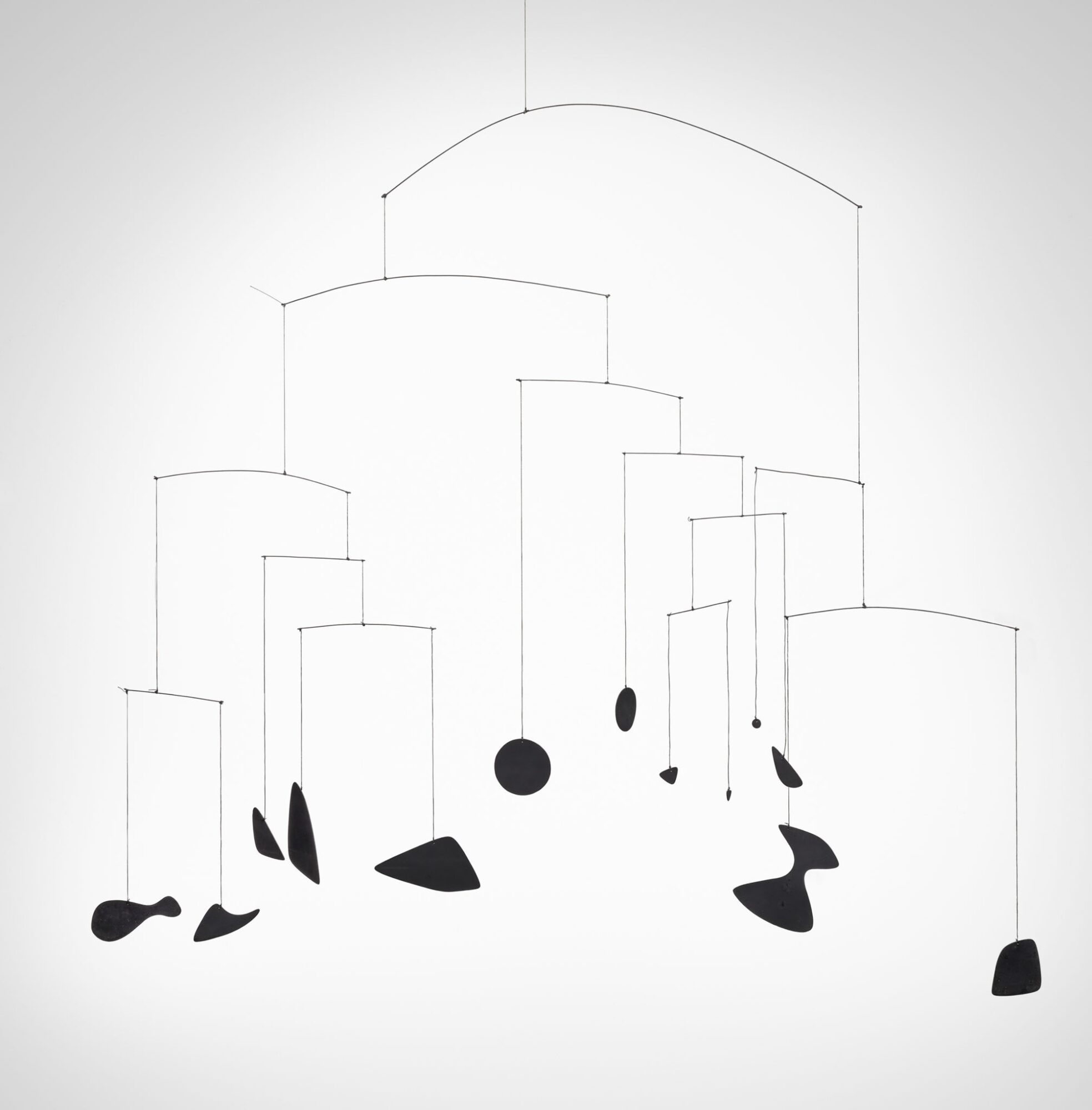For my final project, I’ve drawn significant inspiration from the work of Alexander Calder, one of the most prolific mobile makers of all time. His creations fall into the category of impressionist modern art, with his sculptures embodying quintessential modernism. Throughout his lifetime, he crafted thousands of kinetic sculptures and received astounding critical acclaim, with pieces ending up in places like the Guggenheim Museum and various other exhibits worldwide. I vividly remember seeing his mobiles in third grade, and they have stuck with me since then. At my elementary school, we participated in an activity called “Art in the Suitcase,” where parents would volunteer to teach art to students, dedicating the entire afternoon to delving deeply into the work of a specific artist. Afterwards, we were set free to create our own versions of their work. My attempt at Calder’s mobile during that time ended up being fully lopsided. This time, I hope to create one that’s more effective. Below is one of Calder’s most famous mobiles.





4 Comments. Leave new
This looks like a great project, I like the minimalist yet non-functional qualities of the mobiles you are taking inspiration from. They have beauty but no clear purpose which is cool in its own way. I am curious about how are going to attach this to the ceiling and how much it is going to weigh. What scale are you thinking this would be? I am excited to see how it comes out.
Hey Alex, Thanks for the comment. I think the project should be able 1 meter wide and 1 meter long give or take!
Hi Trent! It sounds like you have a good idea of what you want to do for your final project. I have always thought that mobiles are an interesting challenge to create artwork that also has mathematical influences. Do you have an idea of what shapes you want to incorporate into the design and how do you plan to do the math to make sure it is balanced? I am looking forward to seeing how it turns out.
Hey Ian, I’m hoping to uses leaf like shapes for all of the individual counterweights in the mobile. I plan to use a spreadsheet with the weights of the shapes and the wire lengths and angles to have everything get balanced out!